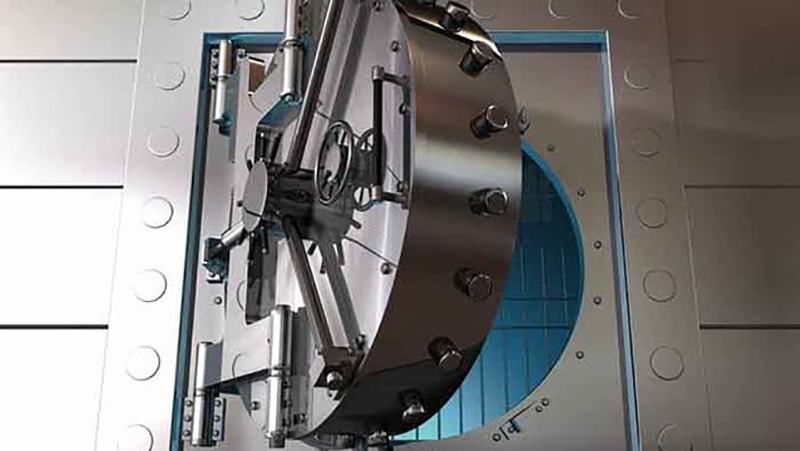By Sebastiano Pirro, CIO of Algebris Investments
Many investors believe banks are only profitable when interest rates are high, but banks have shown resilience and adaptability in the face of low or negative rates.
They can offer attractive returns and value in both equity and credit markets, and we anticipate this remaining the case over the medium to long term.
Banks in Europe have emerged from a decade of either low or negative rates stronger than ever, with clean balance sheets, solid capital, and a tight approach to cost management.
As rates ticked up over the past two years, yields on deposits remained low while loans and other assets repriced significantly, boosting customer spreads. Thus, net interest income (NII) at sector level has grown by around 50% on average since rate hikes began, offsetting pressure on fees and costs and leading to net profit growth greater than 60%.
See also: ‘A tentative start’: Bank of England cuts interest rates to 5%
With central banks now looking at reversing their tightening stance, we think NII will naturally meet an inflection point, though we do not expect NII nor profit to revert to pre-2022 levels.
For a start, rates are expected to remain higher for longer. And markets are also pricing in a Euro rate at about 2.4% throughout 2025, which means their asset yields already reflect a lower rate scenario.
In addition to this, the higher loan production that would come with lower rates and contribution from both structural hedge books and more tactical hedges put in place over past quarters should smooth the NII reduction, while a pickup in activity should contribute to a revival of fees.
While we expect a more stable trend in revenues going forward – and possibly a pickup in credit losses as economic fundamentals deteriorate – bank profitability should remain solid. This means distribution yields of around 10% should be broadly sustainable and attractive.
Europe offers a bright spot in credit
Within credit, the fundamental and technical backdrops remain very solid. Despite the meaningful spread compression in valuations over the past six months, levels remain attractive across the capital structure, with tier 1 (AT1) bonds offering around 400 basis points, tier 2 bonds about 180 basis points, and senior bonds around 90 basis points
Corporate BB (high yield) bonds currently trade around their pre-Covid levels at circa 220 basis points across Europe and the US despite the meaningfully worse fundamental backdrop. The risk-reward in European financial credit is one of the most interesting in global credit.
Outside Europe, banks are facing very different interest rate backdrops depending on the market. In the US, rates have likely peaked and the Fed is now expected to start its easing cycle in September.
See also: Federal Reserve holds rates in July decision
In contrast to Europe, this should very much be a tailwind for most US banks as they have been suffering from intense deposit competition and high funding costs since the US banking crisis sparked by the failure of Silicon Valley Bank last spring.
Lower rates should help to stabilise net interest margins, while fixed asset repricing should similarly support top-line growth as longer duration loans and securities start rolling off the books. As a result, we suspect net interest income at most US banks will start ramping higher into 2025, if the forward curve plays out.
A similar situation prevails in Brazil, where most banks are liability sensitive (i.e. benefitting from lower rates). However, given fiscal concerns and stubbornly high inflation, the market has reversed course and started to price in higher policy rates in Brazil over the next year. This would be painful for bank earnings as margins are crimped and volume growth suffers.
Japanese banks have already priced in earnings upgrades
Contrast all this to the situation in Japan – the Bank of Japan (BoJ), along with the central bank in Brazil, is one of the only major central banks in the world projected to be hiking rates over the next 12-24 months.
Similar to the position of European banks at the outset of the ECB’s hiking cycle, Japanese bank balance sheets are highly liquid and geared to rising interest rates. Earnings’ upgrades could be substantial if higher rates do come to fruition, as we saw over the past couple of years in Europe.
Nevertheless, opportunities in Japanese banks may largely be behind us as valuations have already frontloaded these potential upgrades. Japanese banks have revalued from eight to 12 times forward earnings, whereas European banks started the hiking cycle around six to 7 times.
On top of that, it may well be difficult for the BoJ to push through projected rate hikes at a time when other central banks are all cutting. Either way, it is another piece of the puzzle of the global financial landscape which will be fascinating to watch play out over the next couple of years.
Interest rates are an important driver of bank earnings and, ultimately, stock and bond returns. That said, different banks have different sensitivities to interest rate backdrops. As we look across the global financial footprint, we think banks are still interesting in a low-rate environment, and we think investors should look at both equity and credit opportunities in the sector as they offer attractive yields and value.










